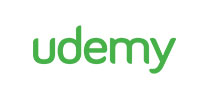335 - Introduction to Pillar7 Devops CICD IaC and GitOps
336 - 12Factor App and Cloudnative Trial Map Devops CICD
337 - Cloudnative Trial Map Devops and CICD
338 - Devops in Cloudnative Applications DevopsDevSecOps CICD IaC GitOps
339 - What is DevOps How DevOps is Used in CloudNative Microservices
340 - What is DevSecOps Key Aspects of DevSecOps
341 - DevOps Stages Software Development and Deployment Lifecycle
342 - Explore DevOps Tools
343 - What is CICD How CICD used in Cloudnative Microservices
344 - CICD Pipeline Steps for Microservices Deployments
345 - CICD Flow and Tools for Microservices Deployments
346 - Deployment Strategies for Microservices Bluegreen rolling and canary deploy
347 - Explore CICD Pipelines
348 - Explore CICD Pipelines GitHub Actions GitLab CICD Jenkins X CircleCI
349 - What is GitHub Actions
350 - How GitHub Actions work Components of GitHub Actions
351 - Deploy Microservices to Kubernetes with GitHub Actions
352 - Explore Cloud Serverless CICD Pipelines Azure Pipelines AWS CodePipeline
353 - What is IaC How IaC used in Cloudnative Microservices
354 - IaC usage in Cloudnative Microservices
355 - Explore IaC Tools
356 - Explore IaC Tools Terraform Ansible Puppet Chef Pulumi
357 - Explore Terraform Automate infrastructure on any cloud with Terraform
358 - Terraform IaC Steps How Terraform Works
359 - Explore Cloud Serverless IaC Tools AWS CloudFormation SAM CDKAzure Resource
360 - What is GitOps How GitOps used in Cloudnative Microservices
361 - CNCF 2022 Annual Survey Organizations Favor GitOps
362 - Key Principles of GitOps
363 - How GitOps Works Steps of GitOps workflow
364 - GitOps Realworld Use Case Black Friday Sale ECommerce
365 - Explore GitOps Tools
366 - CNCF Survey GitOps Tools Argo and Flux Graduated Projects
367 - Explore GitOps tools ArgoCD Flux Jenkins X Codefresh Tekton
368 - Explore Argo CD GitOps Continuous Delivery Tool for Kubernetes
369 - Argo CD deploy microservices in Kubernetes with CICD
370 - Design CloudNative Ecommerce Microservices with Devops CICD IaC and GitOps
